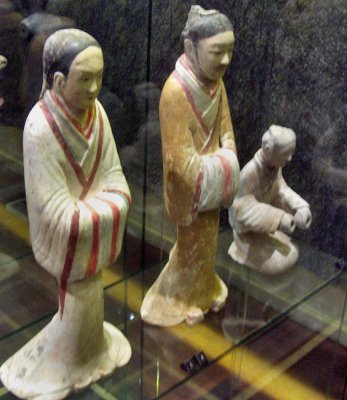Han Dynasty Social Structure

The second imperial dynasty of China was called the Han Dynasty. It actually followed the Qin Dynasty and it was founded by rebel peasant leader Liu Bang. The Han Dynasty was said to have retained the legalistic nature of the Qin Dynasty while doing away with extreme methods like corporal punishment.
This was the period that was characterized by economic affluence, cultural consolidation, and key technological advances. More significantly, this dynasty was distinguished by the rigid Han Dynasty social structure.
Top of the Social Class
The society during the Han dynasty was highly structured with a clear definition of social class. At the top of the social class structure was the emperor. The people were not allowed to address the present emperor by name or else they could be punished.
The most influential relative of the emperor was the wife of the earlier emperor or empress dowager. The empress had the power to appoint a new emperor and issue edicts in case the present emperor died without a designated heir. There were also nobles present during many periods of the Han Dynasty. Eunuchs and regents were positions which were given to very few officials during the later years of the dynasty.
Second Tier of Social Class
The second tier of the social structure was the peasants and farmers. Their social status was above that of laborers even though they were below the wealthier landowners. The wealthy basically depended on them for their products and as a result, they were not typically looked down upon by their fellow gentry men.
Third Class Citizens
The third class of citizens was mainly the craftsmen and artisans. They were responsible for making important items like knives and swords as well as creating luxury goods for wealthy people. Nonetheless, their status is lower compared to that of farmers even though they are still permitted to wear good outfits and ride on horses and carriages.
Merchants were found in the third tier along with servants and commoners. They were seen as lowly scholars and the registered merchants wore white as an indication of their low status. Lastly, slaves made up 1% of the Han Dynasty’s whole population and they could be owned privately or they could be state-owned. The Han Dynasty social structure actually greatly influenced China’s social structure long after its end.
